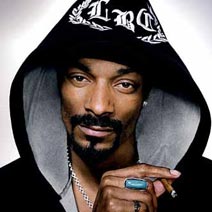By Chris Sagona
When Peter Manseau, a Washington DC-based religion writer, saw his unborn daughter’s ultrasound in utero, he felt his calling to write “Rag and Bone: A Journey Among the World’s Holy Dead.” It was seeing the technician identify her bones, the femur, the upper and lower arms, that inspired him to ponder the mystical and physical nature of bones he’d seen across the world.
Relics.
In some cases, scary relics. Saint Anthony’s tongue, a black cone-like slab in Goa, Italy. St. John the Baptist’s finger, a blackened, child-sized digit, displayed in a church in Florence, Italy. It’s allegedly the finger with which John allegedly pointed out Jesus, “the one” holier than him. And in the case of Buddhists, less visually disturbing relics, such as the hair of Buddha.
Relics like these summon tourists around the world to snake around the block of this or that church, home or museum, waiting for a moment’s glance of a shin, a toe, a spec of a bone or a full body. In the city of Bologna in Italy, the body of Saint Catherine sits upright in a church, forever poised as if reading a prayer book. It’s enough to scare the living daylights out of anyone.
A common site in Europe, it’s something scarcely spoken of in the United States. Manseau’s teasing descriptions provide a thoughtful invitation to explore locations, myths, legends, and truths of relics around the world.
A charred scrap of the alleged remains of Joan of Arc, the most popular saint ever killed by the church, was held up to the light for Manseau to inspect in a French lab with world-renowned paleopathologist Dr. Philippe Charlier, who specializes in sort-of a French version of the “Antique Road Show” for holy relics. Bring him your ancient bones and scraps of ancient tunics and he’ll tell you what you’ve really got.
Manseau has found himself in the company of such experts, and traveling the world alone, seeking an answer to why people thirst for the dry bones and the tattered specs of clothing of dead saints.
In “Rag and Bone” he discusses relic-based economics and tourism, traveling relic shows, as well as the thievery, gifting and trading of relics that encompasses all religions. None escape the reverent dissection of their holy dead, he says– even Jews and Hindus, known for handling the dead as little as possible.
In the case of the Jewish religion, he cites Holocaust Museums as evidence of the inevitability of relics being kept and becoming cherished physical symbols of the mystical. He cites as example, the two long, blond braids of Lili Hirsch, whose mother snipped her braids, wrapped in a tallith, a prayer shawl, for safekeeping until they returned to their home. They were killed in Auschwitz six weeks later, leaving the braids as revered relics. Who can deny the power of such remnants, their ability to move us, horrify us, motivate us, to the point where nations went to battle over it, inciting arguments as large and as enduring as the Crusades.
In “Rag and Bone,” Manseau brings bare bones to life, and he has composed an intriguing, if peculiar travelogue that takes the reader around the world, exploring truth and legend, but more importantly on a journey of understanding why they matter.


